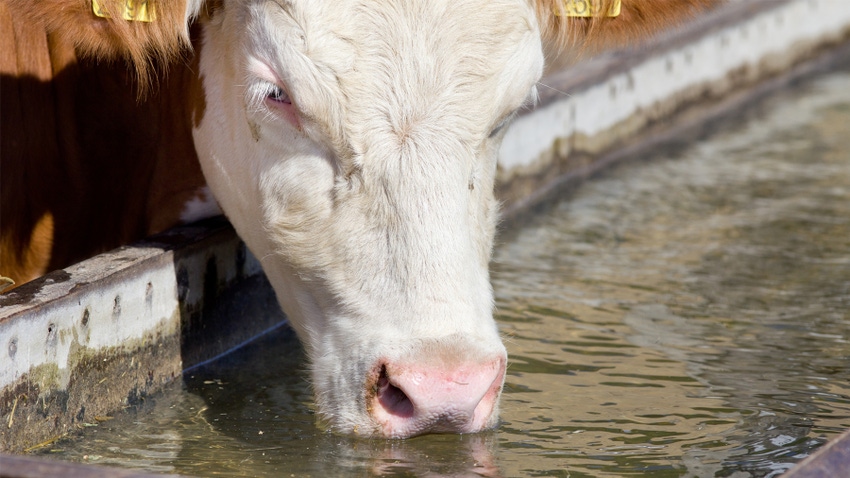November 9, 2023

Water is the most essential nutrient for all species, including beef cattle. A beef herd uses water for growth, reproduction, lactation and regulation of body temperature. These processes can slow down if animals don’t consume enough water, leading to reduced performance or even death.
Water intake in beef cattle has proven to be difficult to estimate. This is due to animal individuality and an earlier lack of technology. However, technology has been developed recently to collect information on an individual animal’s water intake.
These developments in technology have let researchers further examine water intake patterns and amounts in cattle. Research is looking into developing equations to predict water intake in beef cattle. These equations utilize such predictors as weather, feed intake and animal growth to estimate water intake.
While these equations are not exact, they supply insights into estimated water intake levels. These estimations can be used to ensure adequate supply is met for cattle in water fountains and tanks.
Winter weather intake
Water intake levels can be influenced by environmental conditions, such as weather. While weather’s impacts on water intake are more often considered during warmer summer months, colder winter weather also plays a role in animal behavior and, subsequently, water intake.
Weather indices, such as heat and wind chill, have been used to explain how a combination of weather variables affects the body. Temperature and humidity are combined and accounted for within the heat index, while wind chill accounts for the combination of temperature and wind speed to determine heat loss from exposed skin.
During periods of hot temperatures, water intake increases to cool the body and replenish water lost due to sweating, respiration and urination. In contrast, wintry weather causes an increase in feed intake, as animals look to maintain internal body temperature.
Given the cooling properties of water, animals may drink less water to maintain body temperature until more-comfortable weather conditions are met. Also, animals will exhibit behaviors that conserve body heat, such as bedding down or gathering tightly in groups, which limits their movement and may cause less-frequent visits to a water source.
Even given these behavior changes, liquid water that is free of ice should always be available during winter. Also, the water supply should never be restricted no matter the weather conditions at hand.
General water guidelines
The rule-of-thumb is that bulls and non-lactating females require 1 gallon of water per 100 pounds of body weight. In a lactating female, the requirement is increased to 2 gallons per 100 pounds of body weight. These requirements are estimations, and animals can drink above or below this amount given the environmental conditions they are facing.
Space at a water source and water flow should also be accounted for based on expected weather conditions. Typically, 1.5 inches of waterer space per animal is sufficient, however, a general guideline is that cattle require 3 linear inches of water space per animal during the summer.
For information on water quality testing or other concerns about water consumption in cattle, contact your local Extension office.
Source: SDSU Extension
Read more about:
Animal CareYou May Also Like




